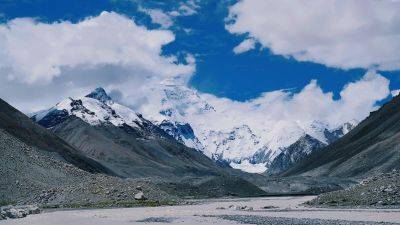Scientists explain Mount Everest's anomalous growth
MAHALANGUR HIMAL — Mount Everest is Earth's tallest mountain — towering 5.5 miles (8.85 km) above sea level — and is actually still growing.
While it and the rest of the Himalayas are continuing an inexorable uplift that dates back to their birth roughly 50 million years ago when the Indian subcontinent collided with Eurasia, Everest is growing more than expected from this alone. Scientists now think they know the reason why, and it has to do with the monumental merger of two nearby river systems.
Everest has gained roughly 49 to 164 feet (15 to 50 metres) in height due to this change in the regional river system, with the Kosi river merging with the Arun river approximately 89,000 years ago, the researchers estimated. That translates to an uplift rate of roughly 0.01 to 0.02 inches (0.2 to 0.5 millimetres) per year.
The geological process at work, they said, is called isostatic rebound. It involves the rise of land masses on Earth's crust when the weight of the surface diminishes. The crust, Earth's outermost layer, essentially floats atop a mantle layer made of hot, semi-liquid rock.
In this case, the merger of the rivers — more like a hostile takeover, with the Kosi subjugating the Arun as the rivers changed course over time — resulted in accelerated erosion that has carried off huge amounts of rock and soil, reducing the weight of the region near Everest.
"Isostatic rebound can be likened to a floating object adjusting its position when weight is removed," said geoscientist Jingen Dai of China University of Geosciences in Beijing, one of the leaders of the study published on Monday (Sept 30) in the journal Nature Geoscience.
"When a heavy load, such as ice or eroded rock, is removed from the Earth's crust, the land







